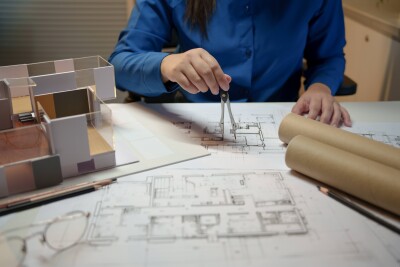Ouch. Sorry for the pun there, but I’ve just had another one of those I’m-living-in-my-own-little-3D-world moments. Just when I thought much of this 3D data capture technology was relatively well known in the AEC community, I run across an article like this one in Modern Steel Construction. On the one hand, sure, it’s great that publications such as this one are touting the benefits of 3D data capture and laser scanning. But, on the other hand, shouldn’t we be further along by now than “Not Your Father’s Surveying Tool”?
Shouldn’t we be further along than using quotation marks around the words “point clouds”? As in:
After two and a half days of scanning, they used software to stitch together the data to create a registered “point cloud” consisting of 13 million points, each with x, y and z coordinates.
Maybe they mean “modern” like the term was applied back in the 1950s. Sorry, that’s a bit snarky. But I do think it should be something of a reality check that a publication that describes itself as “in-depth information on the newest and most advanced uses of structural steel in buildings and bridges” and “focusing on innovative and cost-effective steel designs and the products that help bring them to life” is still basically wowed by laser scanning capabilities.
I was just looking at our market-sizing report from 2007 as part of some research I was doing. In that report, nearly five years ago now, we used these words:
Customers and vendors agree the market has moved well beyond early adoption into substantial numbers of mainstream users, driven by case after case where improved dimensional control aided design, fabrication and construction, operations and maintenance.
And here we have, in 2011, a publication covering the steel construction industry offering up evidence of these benefits as though it should be news to its readers:
“Laser scanning dramatically cut the amount of field time required to collect geometric data for the rehabilitation project,” said Steve Olson, president of Olson & Nesvold Engineers (O.N.E.). “It also permitted the quick collection of a great deal more information than using conventional surveying methods.”
It just goes to show that we’re still in the early stages of the education effort. It’s a reminder that the 3D data capture industry has a ways to go before the technology and its benefits are widely known by those who might benefit from them. Still, I’ve got to admit a bit of surprise. Sure, I still expect to explain what a laser scanner is to the members of my mom’s book club. But engineers putting up steel bridges?





